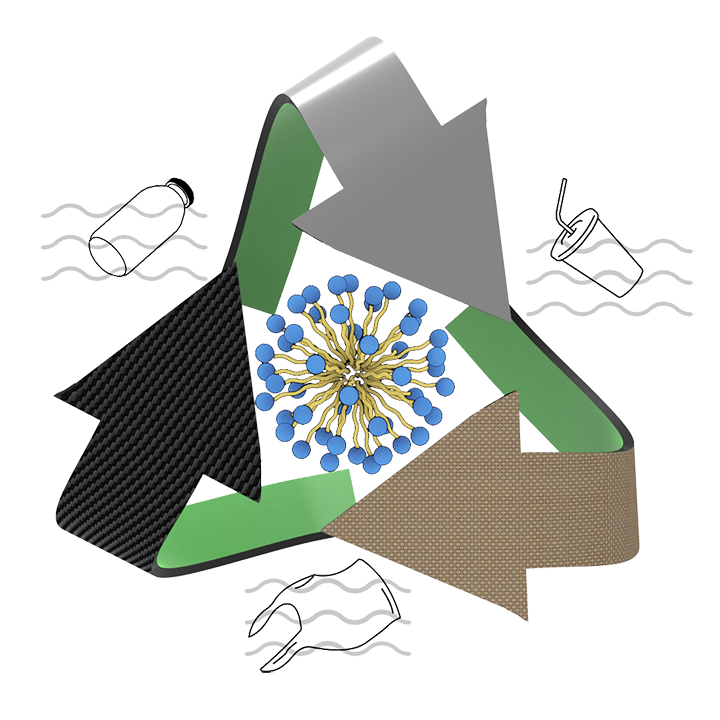
Plastic pollution & recycling
We are developing fundamental researches, to better understand the transport and fragmentation mechanisms of plastic debris in the environment. Their multi-scale characterization allows us to demonstrate that aging in the natural environment leads to major structural and morphological changes. These alterations lead to the loss of the mechanical properties of the material and promote the fragmentation or erosion of the plastic, which leads to the generation of particles down to the nanometric scale (nanoplastics).
Pyrolysis coupled with tandem mass spectrometry allows us to measure microplastics in complex matrices, such as in marine organisms, in order to understand the possible bioaccumulation of microplastics in the trophic chain. We are also studying the impact of formulation additives on these mechanisms.
This approach is based on multidisciplinary cooperation (chemistry, biological and physical oceanography, marine ecology, etc.).
This project is carried out in close collaboration with the NGO Expédition 7e Continent.
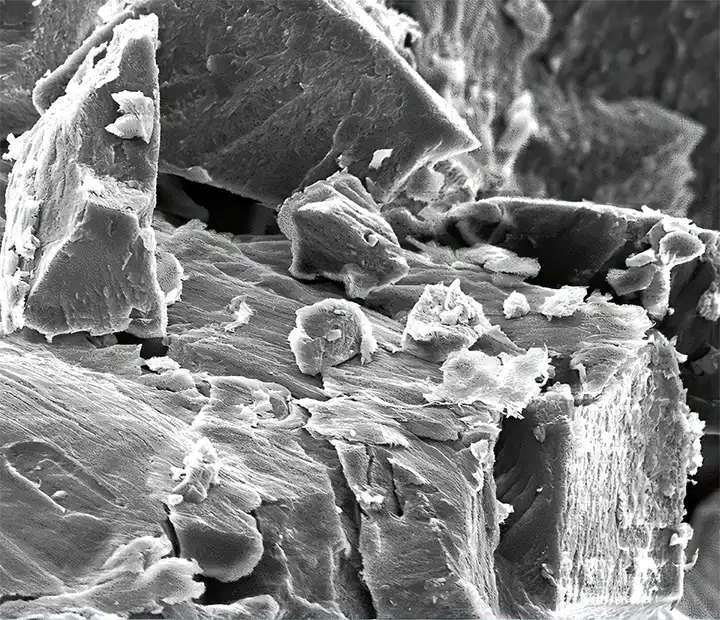
Electron microscopy image of a microplastic collected from the North Atlantic subtropical gyre. On the surface, micrometric particles are ready to detach from the microplastic
Interview with Alexandra ter Halle, ahead of the “Je veux savoir” festival, at the Quai des savoirs in October 2019, to celebrate the 80th anniversary of the CNRS.
Microscopy images of plastic particles collected in the Garonne river: from the macroscopic scale (1 to 5 mm) down to the nanometer (1 to 1000 nm)
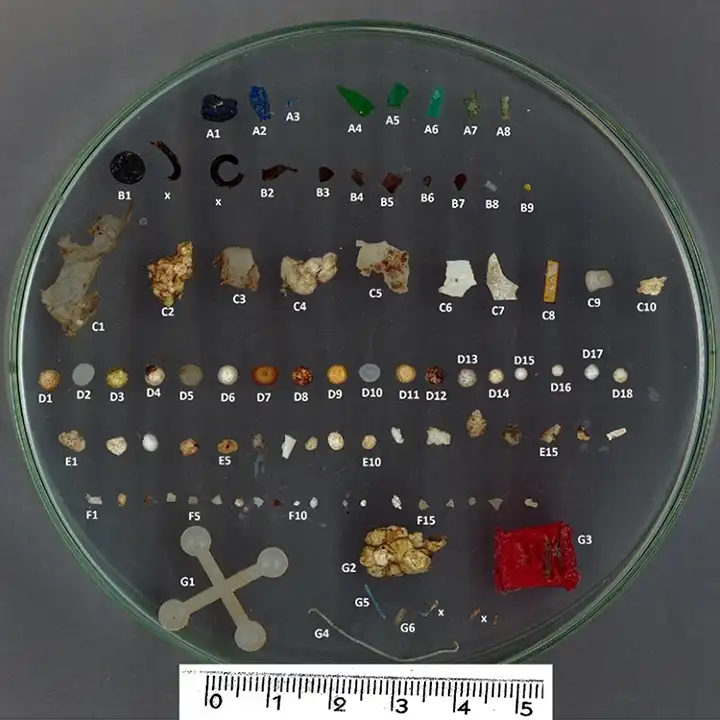
Large microplastics (1 to 5 mm)
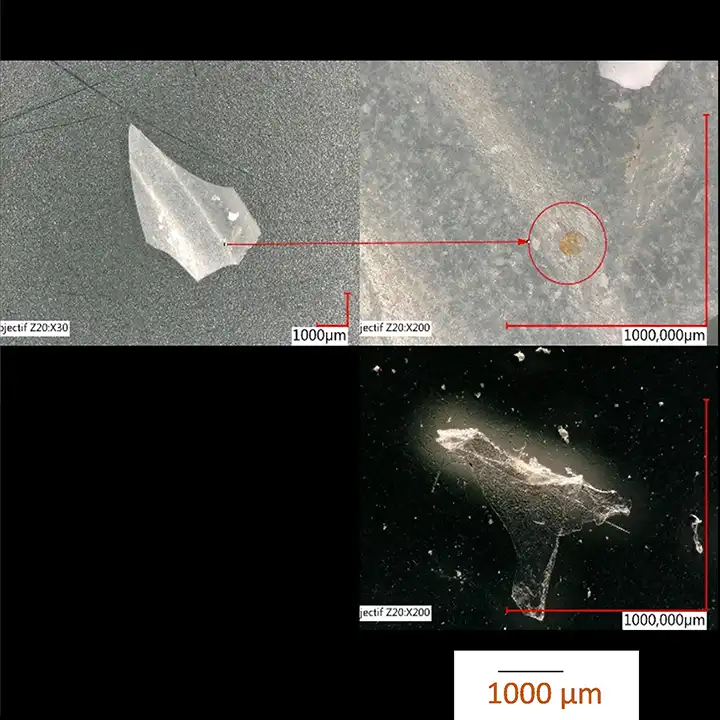
Small microplastics (25 to 1000 µm)
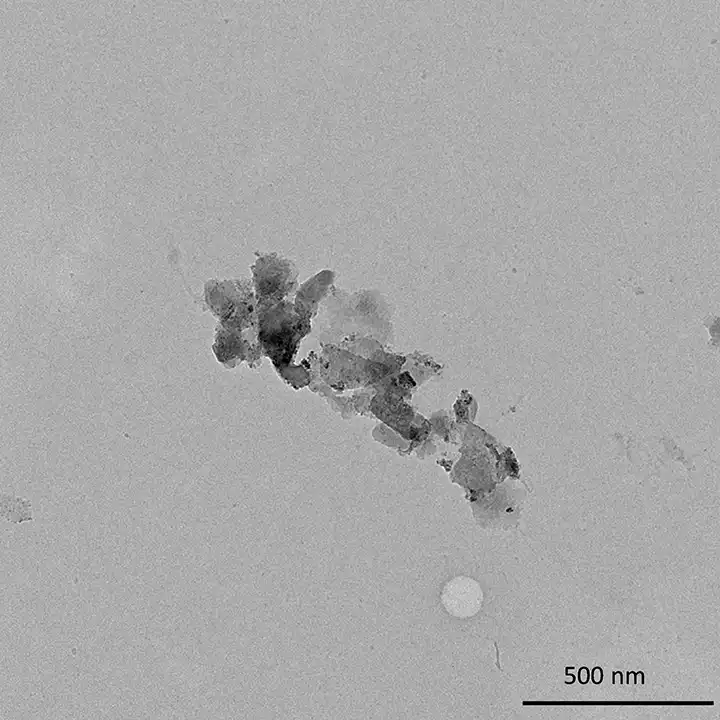
Colloids (1 to 1000 nm)
For nanoplastics, electron microscopy images do not allow to distinguish them from particles of natural origin, but they do highlight the importance of heteroaggregation phenomena.
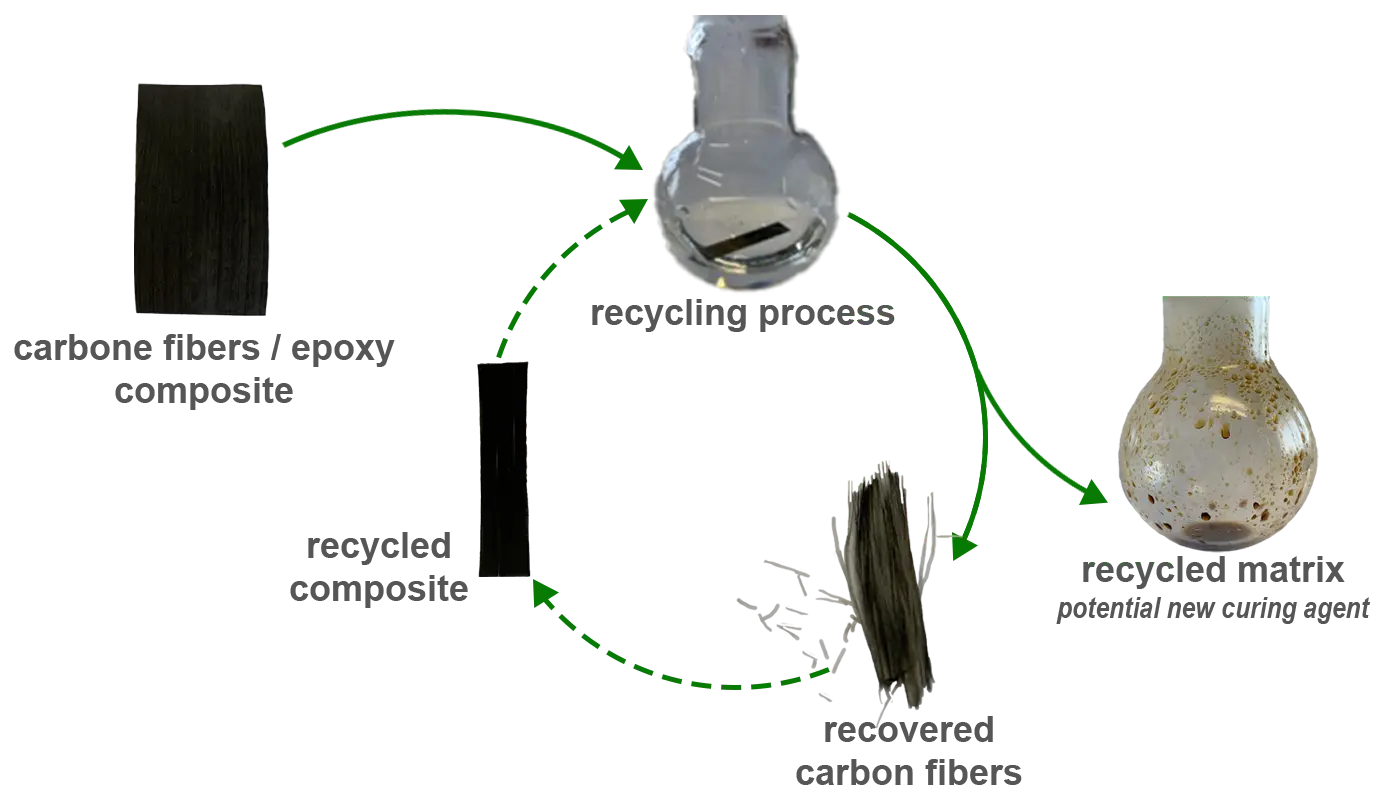
Chemical recycling process allowing recovery of the carbon fibers and the depolymerized matrix from an epoxy composite
Our team is also interested in the chemical recycling of plastics. We are developing an original approach based on reactive systems that respect the environment and the health, making possible to recover certain plastic materials for recycling or reuse.
Thus we have developed, within the framework of an industrial collaboration, a “clean” process able to recycle epoxy composites with carbon fibers, by recovering, from waste materials, the carbon fibers and the depolymerised matrix.
This process has been patented twice:
- “Procédé de recyclage d’un préimprégné à base de résine époxyde et utilisation associée” (FR 2204841)
- “Composition, son utilisation pour recycler un matériau à base de résine époxyde et procédé de recyclage associé” (FR 2204854)



